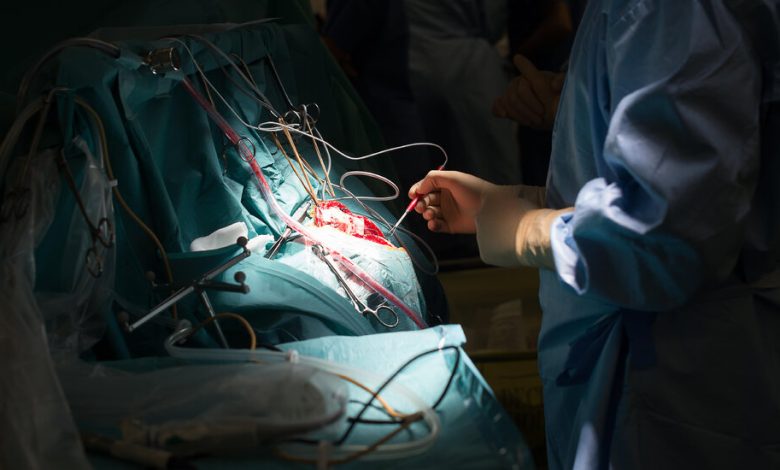New A.I. Tool Diagnoses Brain Tumors on the Operating Table

Once their scalpels reach the edge of a brain tumor, surgeons are faced with an agonizing decision: cut away some healthy brain tissue to ensure the entire tumor is removed, or give the healthy tissue a wide berth and risk leaving some of the menacing cells behind.
Now scientists in the Netherlands report using artificial intelligence to arm surgeons with knowledge about the tumor that may help them make that choice.
The method, described in a study published on Wednesday in the journal Nature, involves a computer scanning segments of a tumor’s DNA and alighting on certain chemical modifications that can yield a detailed diagnosis of the type and even subtype of the brain tumor.
That diagnosis, generated during the early stages of an hourslong surgery, can help surgeons decide how aggressively to operate, the researchers said. In the future, the method may also help steer doctors toward treatments tailored for a specific subtype of tumor.
“It’s imperative that the tumor subtype is known at the time of surgery,” said Jeroen de Ridder, an associate professor in the Center for Molecular Medicine at UMC Utrecht, a Dutch hospital, who helped lead the study. “What we have now uniquely enabled is to allow this very fine-grained, robust, detailed diagnosis to be performed already during the surgery.”
Their deep learning system, called Sturgeon, was first tested on frozen tumor samples from previous brain cancer operations. It accurately diagnosed 45 of 50 cases within 40 minutes of starting genetic sequencing. In the other five cases, it refrained from offering a diagnosis because the information was unclear.
The system was then tested during 25 live brain surgeries, most of them on children, alongside the standard method of examining tumor samples under a microscope. The new approach delivered 18 correct diagnoses and failed to reach the needed confidence threshold in the other seven cases. It turned around its diagnoses in less than 90 minutes, the study reported — short enough for it to inform decisions during an operation.
Currently, in addition to examining brain tumor samples under a microscope, doctors can send them for more thorough genetic sequencing.
But not every hospital has access to that technology. And even for those that do, it can take several weeks to receive results, said Dr. Alan Cohen, the director of the Johns Hopkins Division of Pediatric Neurosurgery and a cancer specialist.
“We have to start treatment without knowing what we’re treating,” Dr. Cohen said.
The new method uses a faster genetic sequencing technique and applies it only to a small slice of the cellular genome, allowing it to return results before a surgeon has started operating on the edges of a tumor.
Dr. de Ridder said that the model was powerful enough to deliver a diagnosis with sparse genetic data, akin to someone recognizing an image based on only one percent of its pixels, and from an unknown portion of the image.
“It can figure out itself what it’s looking at and make a robust classification,” said Dr. de Ridder, who is also a principal investigator at Oncode Institute, a cancer research center in the Netherlands.
But some tumors are still difficult to diagnose. The samples taken during surgery are about the size of a kernel of corn, and if they include some healthy brain tissue, the deep learning system may struggle to pick out enough tumor-specific markers.
In the study, doctors dealt with that by asking the pathologists examining samples under a microscope to flag the ones with the most tumor for sequencing, said Marc Pagès-Gallego, a bioinformatician at UMC Utrecht and a co-author of the study.
There can also be differences within a single patient’s tumor cells, meaning that the small segment being sequenced may not be representative of the entire tumor. Some less common tumors may not correspond to those that have previously been classified. And some tumor types are easier to classify than others.
Other medical centers have already started applying the new method to surgical samples, the study’s authors said, suggesting that it can work in other people’s hands.
But Dr. Sebastian Brandner, a professor of neuropathology at University College London, said that sequencing and classifying tumor cells often still required significant expertise in bioinformatics as well as workers who are able to run, troubleshoot and repair the technology.
“Implementation itself is less straightforward than often suggested,” he said.
Brain tumors are also the most well-suited to being classified by the chemical modifications that the new method analyzes; not all cancers can be diagnosed that way.
The new method is part of a broad movement toward bringing molecular precision to diagnosing tumors, potentially allowing scientists to develop targeted treatments that are less damaging to the nervous system. But translating a deeper knowledge of tumors to new therapies has proved difficult.
“We’ve made some gains,” Dr. Cohen said, “but not as many in the treatment as in the understanding of the molecular profile of the tumors.”
